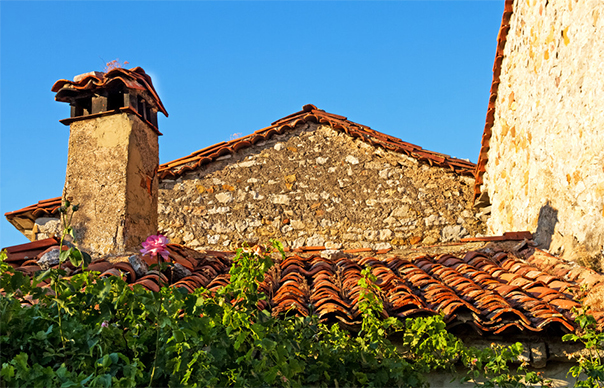 It’s a fact – an annual chimney inspection for your Ann Arbor home done by a certified professional is critical to keeping your chimney in top condition and keeping your family safe. But as a homeowner, you can keep an eye out for potential chimney problems without setting foot on a ladder! Here are some recommendations from Doctor Flue on what to look for to help you decide if it’s time for a chimney inspection.
It’s a fact – an annual chimney inspection for your Ann Arbor home done by a certified professional is critical to keeping your chimney in top condition and keeping your family safe. But as a homeowner, you can keep an eye out for potential chimney problems without setting foot on a ladder! Here are some recommendations from Doctor Flue on what to look for to help you decide if it’s time for a chimney inspection.
Start at the Ground Level
Plants – especially vines – can be at the root of some very serious chimney issues. While the idea of a vine-covered cottage seems charming, a vine-covered chimney can be a problem.
Vines with tendrils, such as ivy, can become embedded in the mortar and brick. Aggressive vines are strong enough to weaken the mortar and produce cracks in aged or weakened brick joints, exaggerating the effects of the seasonal freeze/thaw cycle. These seemingly harmless tendrils can eventually wreak havoc on even the strongest chimney, and should be removed.
IMPORTANT! Before you start removing the vines, make sure they’re not climbing poison ivy, which is prevalent in the Ann Arbor area. Wear thick gloves and eye protection before you start clearing the foliage, and thoroughly wash exposed areas and clothing afterward, just to be safe.
Removing mature vines that already have a strong grip on your chimney can lead to additional damage to the brick and mortar, if you’re not careful. So take your time when you prune. Carefully scrape off the roots with a wire brush. You can use a pressure washer, but only if there isn’t already damage to the structure. If the vine has already made it to the chimney cover, it’s imperative to remove them ASAP! The vines can clog the chimney, preventing smoke and carbon monoxide from properly exiting your house. Plus, they’re flammable, creating a significant fire hazard. If you’re uncomfortable with getting on the roof, contact a chimney professional who can clear them for you.
Inspect for holes that could allow insects or rodents to crawl into your chimney. While you’re at it, check for loose masonry – especially if the chimney has been covered by vines or other shrubbery.
Now Take a Step Back
Look at how the chimney is “standing.” Is it straight, or does it seem to lean? Over time, settling can occur, especially if the chimney’s footing is missing or inadequate. If the chimney has tipped or pulled away from the house, it’s likely that settling is the culprit. This is a serious safety risk which could lead to fire, smoke, or carbon monoxide in the house. If your chimney is tipping or separating from the house, contact a repair professional immediately!
Finally, Look Up
Now it’s time to assess your overall chimney structure. A pair of binoculars can come in handy here. Look toward the top of the chimney to see if you notice anything out of the ordinary. Scan the chimney top, making sure the crown is intact and that the chimney cap is present and in good repair.
Examine the flashing. If you see what looks to be an excessive amount of black sealer between the chimney walls and the roof, point that out the during your next professional inspection. This is typically the sign of a poor installation or repair, which may be prone to leaks.
Before you go, take a moment to just observe activity around your chimney. Do you see birds or insects going in and out (usually around sunset)? Chances are, they’re calling your Ann Arbor home their home, and what they leave behind is messy and potentially flammable. Keep an eye on the situation and let your chimney expert know about it during your next cleaning.
Ann Arbor Residents – Contact Doctor Flue and Schedule Your Next Inspection!
Call Us: 1-800-438-3583
Email Us: office@drflue.com
Office Hours: Mon-Fri: 8am-4pm
Connect with Doctor Flue on Social Media
Facebook | Twitter | Google + | YouTube | Pinterest | Houzz
